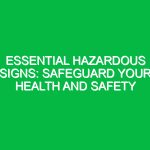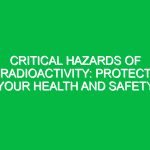Introduction
Hello everyone, and thank you for gathering today for this essential Toolbox Talk. Today, we’re diving into a crucial topic that affects our daily operations and overall Safety: **Compressed Gas Cylinders**. These cylinders play a significant role in many of our tasks, whether we’re welding, cutting, or using various gases in our processes. Understanding how to handle them safely is vital to preventing accidents and ensuring a secure working Environment.
What Are Compressed Gas Cylinders?
Compressed gas cylinders are containers designed to hold gases at high pressures. They are commonly used in various industries, including construction, manufacturing, and healthcare. These cylinders can contain a range of gases, from oxygen and acetylene to nitrogen and carbon dioxide. Each type of gas has its characteristics and uses, making it essential to understand the specific Safety protocols associated with each cylinder type.
Why Safety Matters
The importance of safety when working with **compressed gas cylinders** cannot be overstated. Improper handling can lead to severe consequences, including explosions, fires, and health Hazards. According to the Occupational Safety and Health Administration (OSHA), thousands of injuries occur annually due to mishandling compressed gas cylinders. By adhering to safety protocols, we can mitigate these risks and create a safer workplace for ourselves and our colleagues.
Key Hazards Associated with Compressed Gas Cylinders
Understanding the hazards related to **compressed gas cylinders** is the first step in ensuring safety. Here are some of the most common risks:
- Explosion Risk: If a cylinder is dropped or damaged, the sudden release of gas can cause an explosion.
- Fire Hazard: Many gases are flammable. A leak or rupture can lead to Fires, especially in confined spaces.
- Asphyxiation: Gases like nitrogen can displace oxygen in the air, leading to suffocation.
- Corrosion: Some gases can react with materials, leading to cylinder degradation and potential leaks.
Best Practices for Compressed Gas Cylinder Safety
To ensure safety when handling **compressed gas cylinders**, it’s essential to follow Best Practices. Here’s a comprehensive list of guidelines:
1. Proper Storage
Compressed gas cylinders should always be stored upright and secured to prevent tipping. Ensure they are stored in a well-ventilated area, away from heat sources and flammable materials.
2. Use Correct Labels
Always check that the cylinder is labeled correctly. This label should indicate the type of gas and any associated hazards. If a label is missing or damaged, report it immediately.
3. Inspect Before Use
Before using a **compressed gas cylinder**, conduct a visual inspection. Look for signs of damage, rust, or corrosion. If you notice anything unusual, do not use the cylinder and report it.
4. Utilize Proper Equipment
Always use the appropriate regulators and hoses for the specific type of gas you are working with. Using the wrong equipment can lead to leaks or accidents.
5. Handle with Care
When moving cylinders, use a proper hand truck designed for that purpose. Never roll a cylinder on its side, and always secure it during transport.
6. Know Emergency Procedures
Familiarize yourself with emergency procedures in case of a gas leak or other incidents. This includes knowing the location of emergency shut-off valves and how to use fire extinguishers.
7. Training is Key
Ensure you have received adequate Training on how to handle **compressed gas cylinders**. If you’re unsure about any procedures or Safety Measures, speak up.
Real-Life Scenario: The Importance of Proper Handling
Let’s consider a hypothetical scenario. Imagine a worker is using an acetylene cylinder for welding. They notice that the regulator is not functioning correctly, but instead of addressing the issue, they decide to continue working. This decision leads to a gas leak, which could have been easily avoided with proper checks and reporting.
This scenario highlights the critical importance of taking the time to inspect equipment and ensuring everything is in order before beginning work. By doing so, we not only protect ourselves but also our colleagues and the environment.
Regulations and Standards
When it comes to safety, regulations play a vital role. The following standards are essential for anyone working with **compressed gas cylinders**:
- osha Standards: OSHA provides guidelines on the Safe Usage and storage of compressed gas cylinders.
- American National Standards Institute (ANSI): ANSI outlines safety standards for various industrial applications.
- National Fire Protection Association (NFPA): NFPA codes address fire safety related to compressed gases.
Compliance with these Regulations not only ensures safety but also meets legal obligations. Failure to adhere to these standards can result in serious penalties and increased risk of accidents.
Discussion Points
Before we wrap up, I’d like to encourage some discussion. Here are a few questions to consider:
- What Safety Measures do you already practice when handling **compressed gas cylinders**?
- Have you ever encountered a situation where safety protocols were not followed? What was the outcome?
- What additional training or information would help you feel more confident in handling these cylinders?
Your input is valuable, and sharing experiences can help us all learn and improve our safety practices.
Conclusion
In conclusion, today’s Toolbox Talk has covered essential safety tips for working with **compressed gas cylinders**. Remember, our safety is paramount, and following these Best Practices not only protects you but also your coworkers and the environment. Always stay vigilant and proactive in ensuring a safe workspace.
Thank you all for your attention and commitment to safety. Let’s keep these practices in mind as we move forward with our tasks today and every day. Stay safe!


